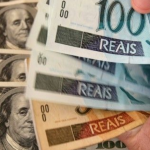 WTI and Brent futures logged sizable weekly gains, as trading ended on Friday. Iraq, a major oil producer and exporter, was the scene of intense fighting, as Islamist insurgents attacked cities. Elsewhere, the US logged a drop for crude oil inventories, further supporting contracts. Next week will see more key data from top oil-consuming economies.
WTI and Brent futures logged sizable weekly gains, as trading ended on Friday. Iraq, a major oil producer and exporter, was the scene of intense fighting, as Islamist insurgents attacked cities. Elsewhere, the US logged a drop for crude oil inventories, further supporting contracts. Next week will see more key data from top oil-consuming economies.
West Texas Intermediate futures for settlement in July closed for $106.91 per barrel on Friday on the New York Mercantile Exchange, up 0.36% for the day and logging a 4% weekly gain. Weekly high and low stood at, respectively, $107.68 per barrel on Friday, a nine-month high, and $102.62 per barrel on Monday. Last week the US benchmark was relatively unchanged.
Meanwhile on the ICE in London, Brent futures due in August recorded a 0.04% daily gain to close for $112.46 per barrel on Friday, also adding about 4% for the week. Brent’s premium to August WTI stood at $6.29, widening last week’s closing margin of $5.90. Weekly high and low were at, respectively, $114.07 per barrel on Friday, also a nine-month high, and $107.79 per barrel on Monday. The European brand dropped about 0.6% last week.
“Oil is now in a new price territory and is likely to climb more as investors rework their positions, supported by the uncertainty and technicals,” Ken Hasegawa, Tokyo-based commodity sales manager at Newedge Japan, said for Reuters. “Given the break past key resistance at $105 a barrel, the U.S. benchmark may rise towards $112 over the next two weeks, the high touched last year, if it manages to break past the next ceiling of $110.”
Iraq
Iraq was the scene of a bloody religious onslaught over the last couple of days, when a Sunni Islamist organization, boasting some 5 000 troops, according to the BBC, launched assaults on towns in the northern provinces of the country. The group, called ISIS, or ISIL, is linked with al-Qaeda, and is composed of Sunni extremists, who regard Shia Muslims, who represents the majority of the population in Iraq and Iran, as infidels.
Developments shook markets, as the US said they are “considering all options, including military”. Earlier, the Iraqi oil minister had said that the US would provide air support for Iraqi ground troops retaliating against the insurgents.
Meanwhile, the Shia majority have been urged by clerics to take up arms, in response to the Sunni onslaught, which reportedly left hundreds dead.
“There’s potential for disruption to spread around the Middle East and we’re talking about significant amounts of daily supply,” said for Bloomberg Michael McCarthy, chief strategist at CMC Markets in Sydney who predicts Brent may climb to $125 a barrel if there’s an attack on Baghdad. “The market got concerned about potential disruption in Libya; Iraq is a much more serious situation.”
Iraq is the second-largest OPEC oil producer, and shipped 5.43 million barrels from Basra on Wednesday alone, according to the oil minister.
Earlier, OPEC had agreed to keep its quota on oil output unchanged at 30 million barrels per day.
Ukraine
The conflict in eastern Ukraine continues inflaming, as a report of three Russian tanks entering rebel-controlled territory angered Kiev. Moscow denied the report and expressed concern over the continuing hostilities, the BBC reported.
“The lack of any progress whatsoever in efforts to stop the violence and halt military operations… is causing increasing concern,” Russian Foreign Minister Sergei Lavrov said.
Rebels, however, had confirmed that they have acquired the three tanks, the BBC reported.
Meanwhile, Mariupol was the scene of heavy fighting on Friday, as security forces wrestled back control over key buildings in the town.
US demand outlook
The US, which consume 21% of all oil, posted several economic reports this week. PPI for May was recorded at -0.2% on a monthly basis, after 0.6% growth in April, while core PPI was at -0.1%. Earlier, retail sales scored slightly worse than expected at 0.3% monthly growth for May, while core retail sales, which exclude autos, were at 0.1%. Jobless claims were also a little worse than expected, but remain relatively positive.
Meanwhile, the US Energy Information Administration (EIA) posted its weekly oil inventories report for the seven day through June 6 on Thursday. The log revealed a 2.6-million-barrel drop for crude oil inventories, with a sizable decline for imports, which have now dropped almost almost 20% over the last two weeks. Meanwhile, gasoline stockpiles added 1.7M barrels, while distillates gained 0.9 million. The report also revealed sizable drops for distillates and gasoline production, with a downturn in the refinery utilization rate.
“There should be draws in crude inventories and increases in gasoline stocks; this is the time of year that it should happen,” Jonathan Barratt, chief investment officer at Ayers Alliance Securities in Sydney, said for Bloomberg.
To come
Next week will offer more data for the worlds top oil-consuming economy. Foremost, the Federal Open Market Committee (FOMC) will meet on Wednesday, to decide on monetary stimulus and interest rate for the US, decisions of massive influence on financial markets. Experts suggest another $10bn trim of monthly assets purchases, while the interest rate will probably remain unchanged at 0.25%. Every meeting and decision of the FOMC is closely watched by investors, looking for cues as to the direction and expectations for the worlds top economy.
Industrial production for May will be revealed on Monday, and analysts project a 0.4% monthly growth, after -0.6% were logged in the previous month.
The key figure on CPI for May will be revealed on Tuesday, and forecasts suggest a 0.2% monthly growth, after 0.3% in April, and an unchanged 2.0% growth on an annual basis. Core CPI, which excludes the more-volatile food and energy, is expected to stand for a 0.2% monthly growth, and 1.8% year-on-year. Consumer prices are the main indicator on consumer spending, which generated about 80% of US GDP.
Building permits and housing starts will also be posted next week, and are forecast to be relatively unchanged. Also, Philadelphia Fed manufacturing index for June is due, which is expected to mark a slight downturn.
Elsewhere, the Eurozone, which accounts for about 14% of total oil consumption, will also report on economic readings. Final figures on CPI for May will be posted on Monday, and experts forecast a -0.1% standing on a monthly basis, after 0.2% growth in April, and an unchanged 0.5% year-on-year. Germanys Zentrum für Europäische Wirtschaftsforschung (ZEW) will post its June reading on economic sentiment, forecast to log a sizable improvement since May.
China
The Chinese government revealed a plan to help boost the economy this week. Authorities announced reserve requirements cutbacks for banks, which lend to farming companies and small-to-medium sized firms, in attempt to reverse the economic growth slowdown.
“China’s rate cut decision is another step towards supporting the domestic economy,” Ric Spooner, chief market analyst at CMC Markets in Sydney, said for Reuters.
Several key figures on the Chinese economy, which accounts for 11% of total oil demand, were reported in the past seven days. Industrial production for May was logged at 8.8% annual growth, in line with expectations, after 8.7% in April. The industrial sector accounts for nearly half of Chinese GDP. Fixed assets investments for May added on forecasts for an annual growth of 17.2%. Retail sales for May in China also improved on expectations and on the previous reading to record an yearly growth of 12.5%, after 11.9% in April.
Previously, Chinese foreign trade and CPI were reported. Surprisingly shrinking imports indicated lowering domestic consumption, while a sharp drop for inbound crude oil shipments only added to negative sentiment. CPI and PPI were reported better-than-expected, but still in the negative on an annual basis.
China will post new yuan loans for May, forecast at 750bn, and foreign direct investments on Sunday.





